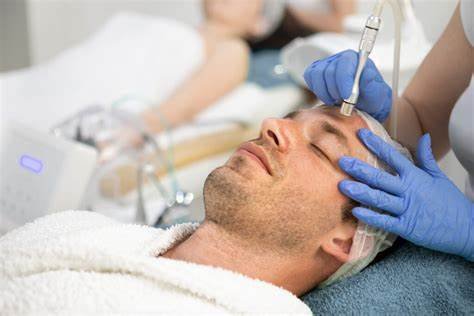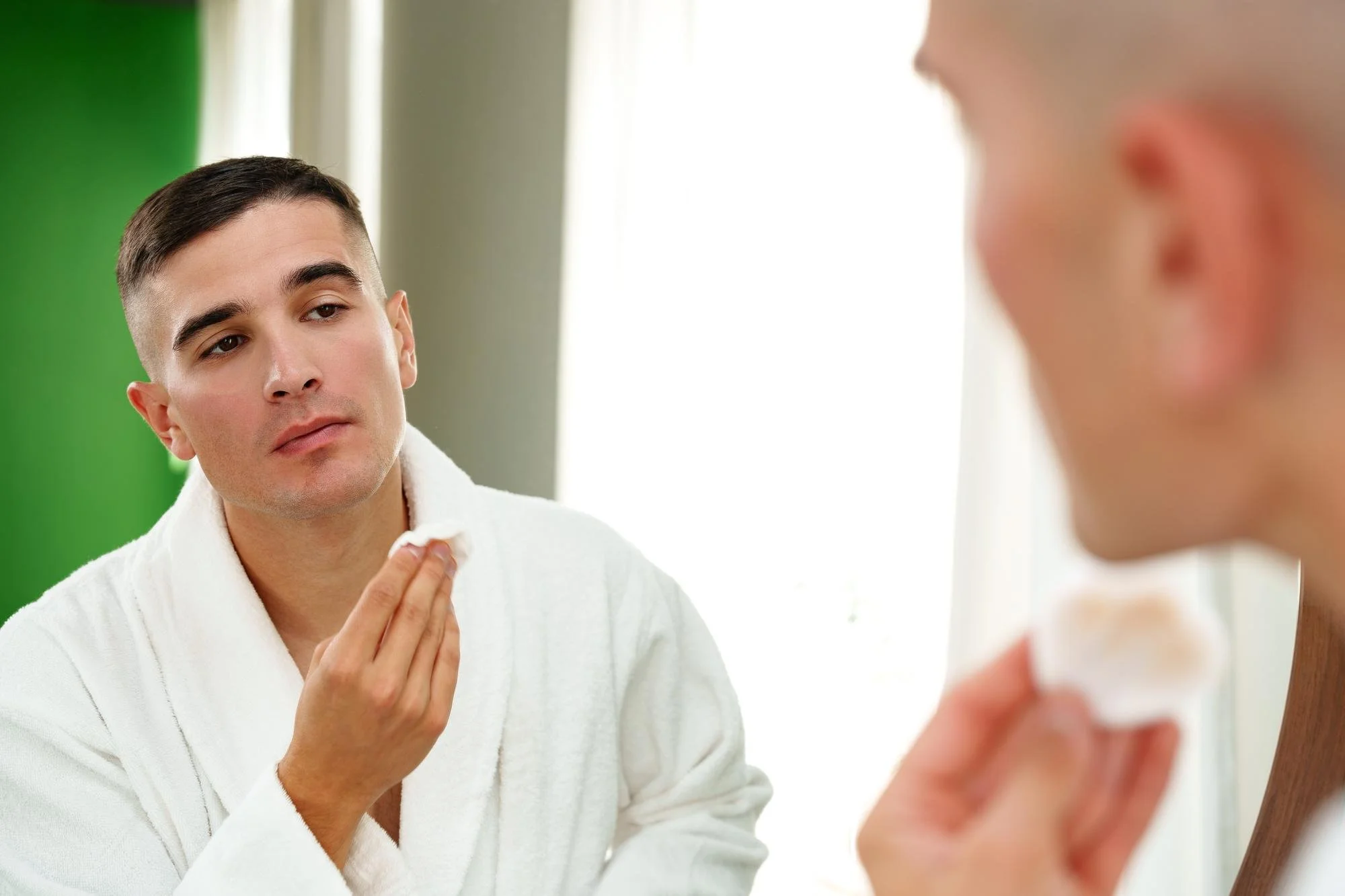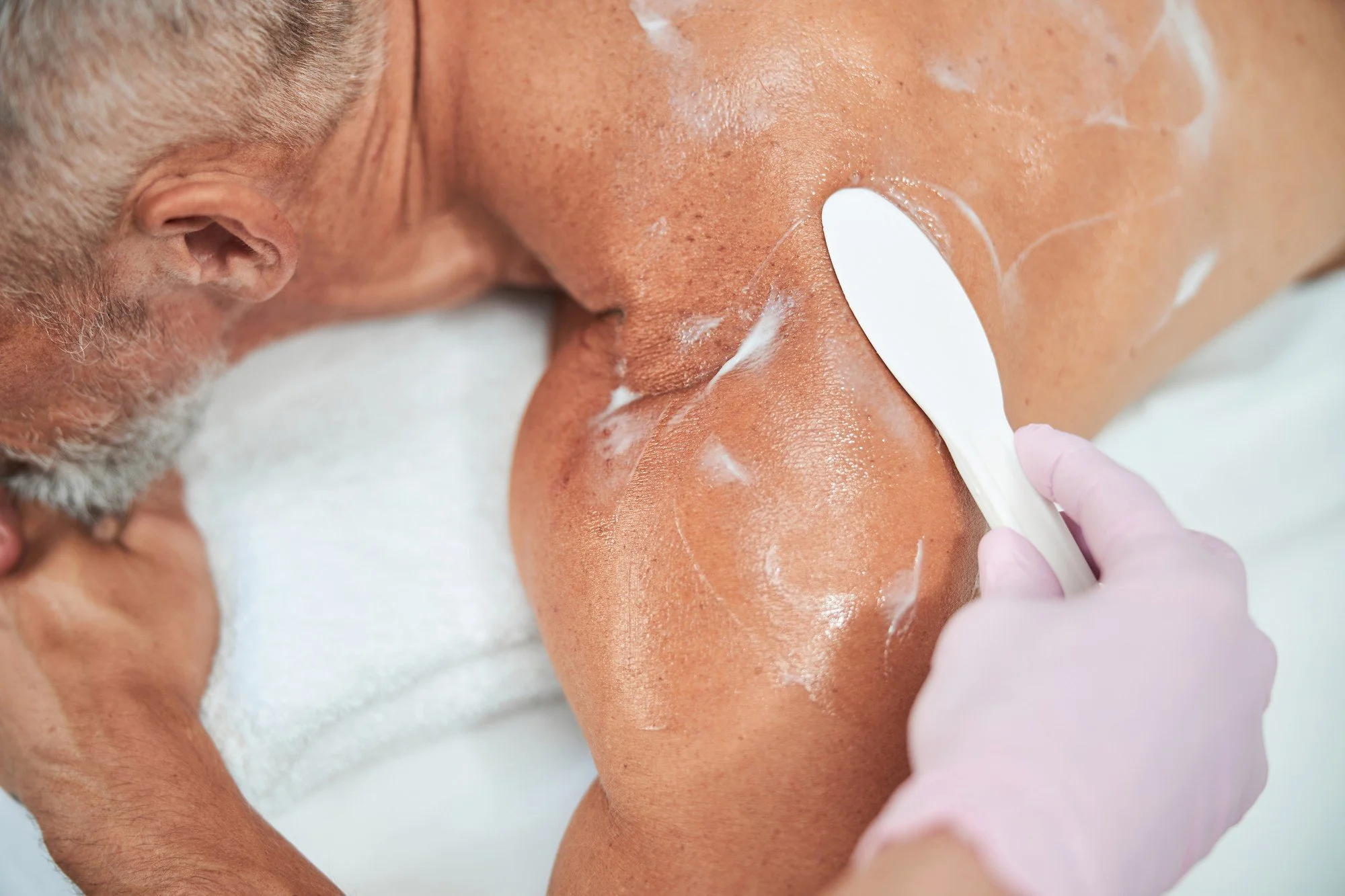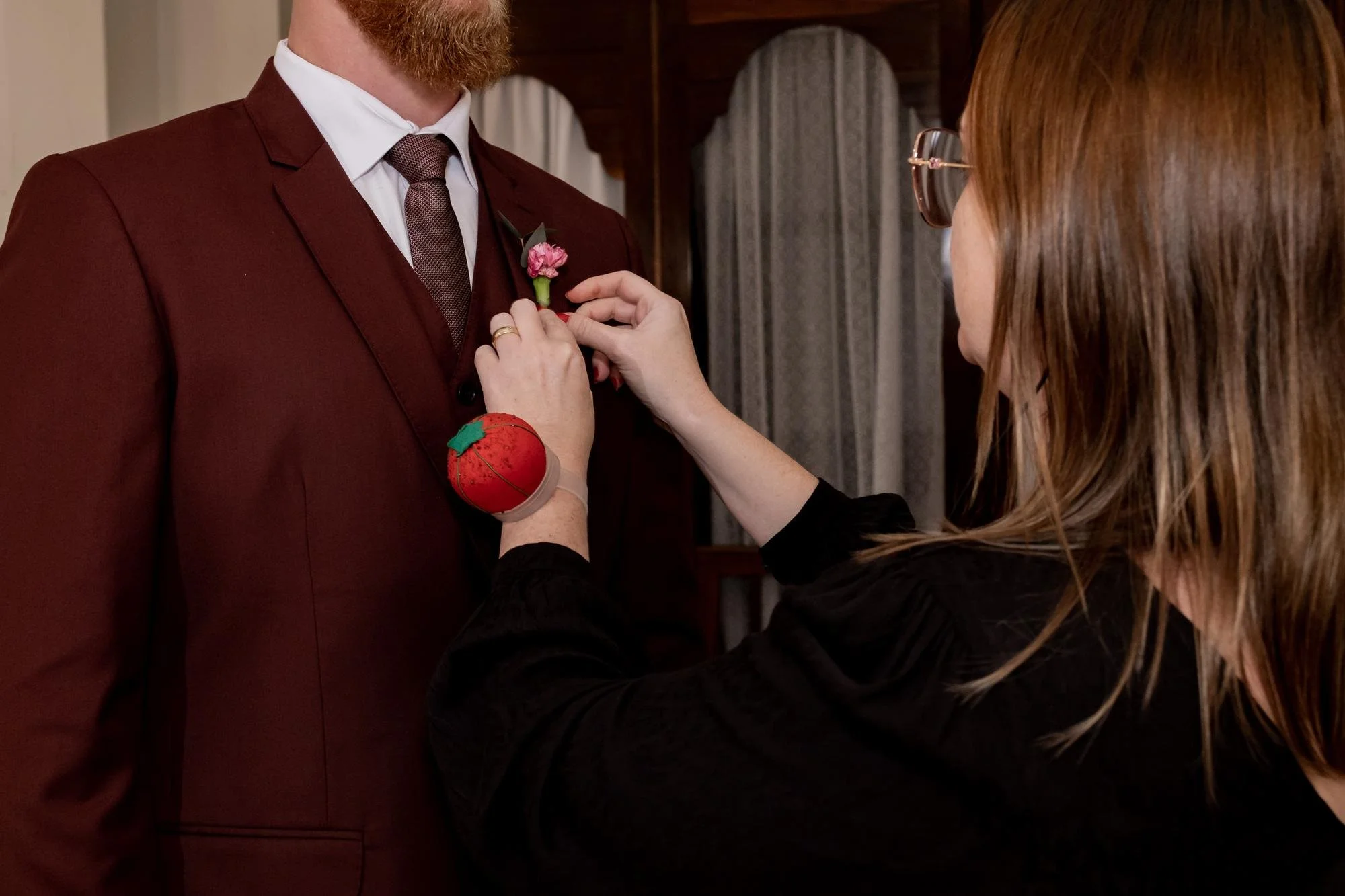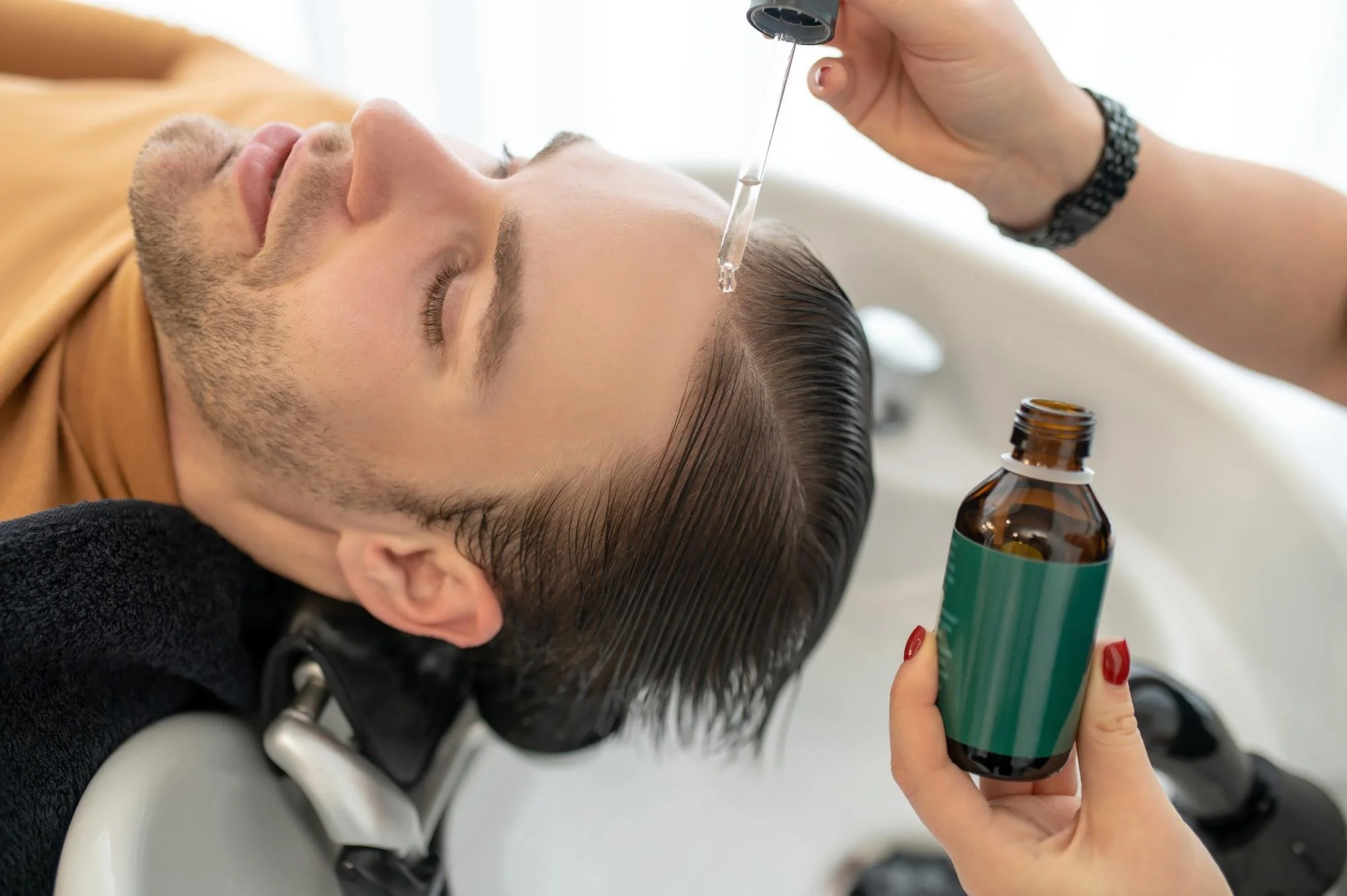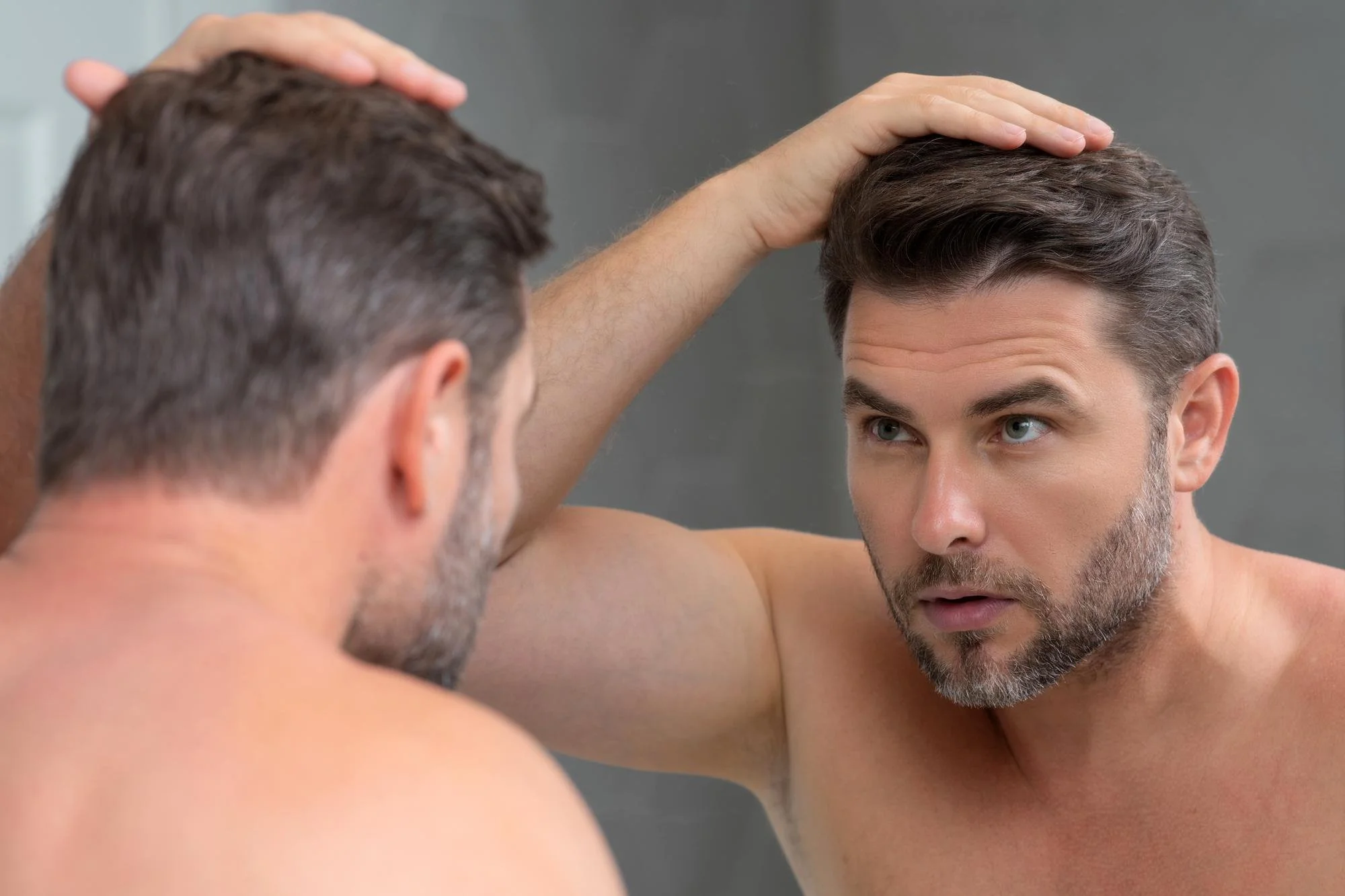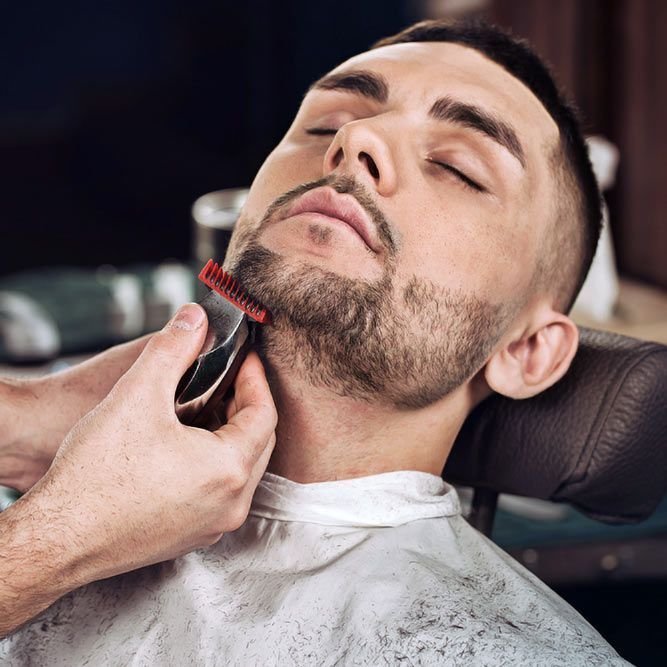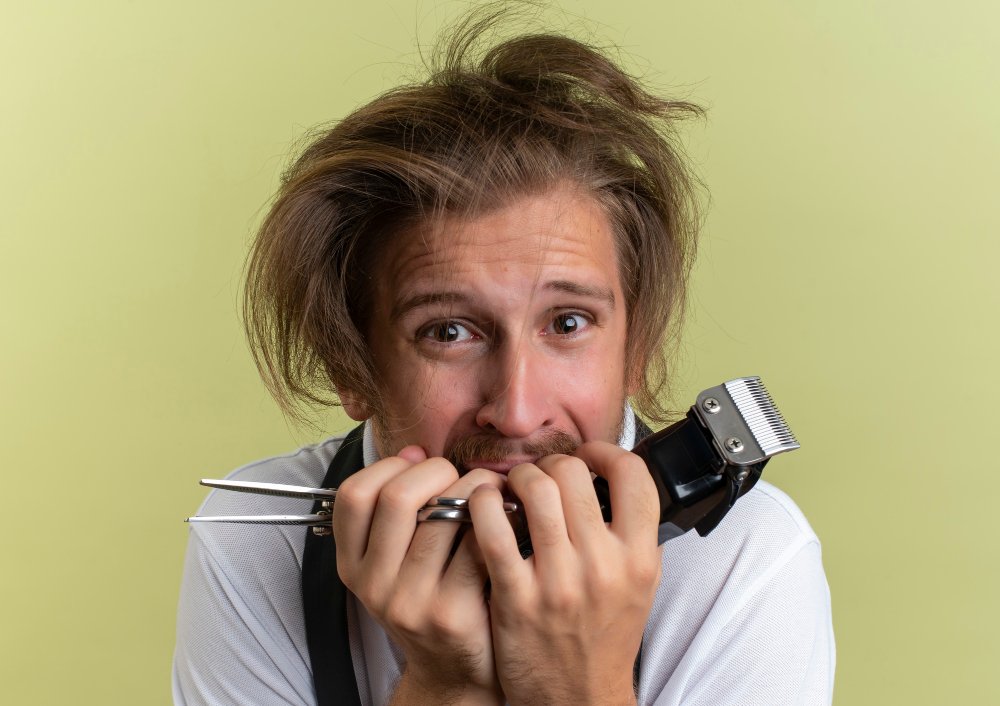Chemical peels are now among the most sought-after skin care treatments for men — especially those looking for better texture, fewer shaving-related issues, and a clearer complexion. However, even with the high demand for them, the question that always pops up first is: “How long does a chemical peel last?”
The chemical peel results timeline is crucial in deciding whether this treatment is suitable for your skin goals and your lifestyle. Men want to get rid of skin issues fast, seek treatment with minimal downtime, and see the difference in their skin, and chemical peels do just that.
This guide outlines everything you need to know, including the longevity of results, the duration of the peeling process, the number of layers removed during a chemical peel, ways to extend your results, and whether a chemical peel delivers the desired results for men. In addition, we will discuss specific skin concerns, such as shaving irritation, acne scars, and whether chemical peels for rosacea are permissible.
What a Chemical Peel Actually Does
A chemical peel is a procedure that involves applying a powerful, yet controlled, exfoliating solution to the skin. The outer layer of the skin is removed using this solution, making the skin surface smoother, cleaner, and brighter.
The process is directed at the most common problems, such as:
Acne spots
Uneven skin surface
Hair growing back under the skin
Irritated skin from shaving
Pores that are larger than normal
Skin that has been damaged by the sun
Appearance of fine lines and the very first indicators of aging
Due to thicker skin and increased sebum production, men are likely to enjoy results that are even more impressive than those of women — sometimes just after one treatment. There are three types of peels — light, medium, and deep — and each has its own approach to treating the skin, which in turn affects the number of layers removed and the duration of the results.
How Long Does a Chemical Peel Last? A Complete Guide for Men
One of the most popular treatments among men is the chemical peel, and this is not without reason. Men desire effective treatments, allow them to have a busy lifestyle, and provide significant changes in their looks. A chemical peel meets these requirements perfectly. However, the biggest question men always have before taking the plunge is: “What is the duration of a chemical peel?”
So, it is essential to know which factors determine longevity, how long the peeling phase lasts, how many layers are removed during a chemical peel, and the progression of results over time. This guide not only covers the areas of whether the treatment is worth the money, how the timer for the chemical peel results works, and the duration of each peel type, but also answers the question about when a chemical peel for rosacea is appropriate and shares the benefits of using a men-oriented provider for better and longer-lasting results.
What a Chemical Peel Actually Does
A chemical peel can be considered the ultimate exfoliation, a process that removes the top layer of the skin, forcing it to renew itself. The peel solution works by melting away the damaged cells on the skin’s surface, revealing the fresh, healthy skin underneath. As a result, this skin renewal process helps diminish issues such as fine lines and roughness, discoloration, large pores, acne scars, and even shaving irritation.
This is because men's skin is thicker by nature and also oilier, and it also undergoes the stressors of shaving, environmental damage, and sweat; thus, men notice more dramatic results than women. A single peel, in fact, can result in a noticeably brighter complexion, smoothing out areas with different textures and giving a more youthful appearance.
The light, medium, and deep peels penetrate at different levels; accordingly, the layers of skin removed and the depth of penetration dictate the duration of the chemical peel.
How Long Does a Chemical Peel Last? (By Peel Strength)
Your results depend almost entirely on the peel's strength.
Light Chemical Peel
The topmost layer of skin changes only with light chemical peels, lasting approximately 1 - 2 months. Light chemical peels are an excellent choice for individuals seeking subtle yet fast results with no downtime. Because they are so light on the skin, many men opt to have a light peel every 4 - 6 weeks for consistent brightness, clarity, and smoothness.
Medium Chemical Peel
Medium chemical peels go much deeper into the skin than a light peel and provide much longer-lasting results, between 3 - 6 months, often longer. Medium chemical peels promote collagen growth, reduce acne scars, fade persistent areas of discolouration, and even out texture. Medium chemical peels usually provide better results for men with thicker or oily skin because their deeper action better matches their skin structure.
Deep Chemical Peel
The deep chemical peel is the most drastic approach and can provide the most transformational results. This type of chemical peel can remove damaged layers deep within the dermis that are causing deep wrinkles, substantial discoloration, and advanced sun damage. The results of deep chemical peels often last for many years (sometimes approaching 10), and for most men, one deep chemical peel is sufficient to continue providing some improvement.
How Long Does the Peeling Phase Last
To understand how long the effects of a chemical peel will last, it is essential to examine the underlying processes involved in the peel. These processes vary depending on the peel's strength and provide a clear picture of how deeply the peel penetrated the skin. A light peel typically exhibits a light, flaky appearance for one or two days after application. In contrast, a medium peel tends to produce more noticeable peeling that usually lasts approximately one week. Therefore, deep chemical peels can achieve more extensive peeling than light or medium chemical peels, due to their ability to penetrate the dermis. The duration and quantity of peeling are determined by the number of layers removed during the treatment; therefore, although fewer fragments are shed than large sheets, both are considered part of the normal healing process following a chemical peel.
Chemical Peel Results Timeline (Week-by-Week)
The chemical peel results timeline follows clear stages as the skin renews itself.
Day 1:
The skin feels warm, tight, and slightly red.
Days 2–3:
Dryness increases, and early flaking begins. The skin may feel slightly rough.
Days 3–7:
Peeling becomes more noticeable. Men often see shedding around beard areas because the hair follicles regenerate differently.
Days 7–14:
Once the peeling stops, new skin becomes visible. It’s usually smoother, brighter, more even-toned, and less irritated.
Weeks 2–4:
This is when the full results develop. Pores appear smaller, texture improves significantly, and shaving irritation is usually reduced. Medium peels may continue to improve for another 2 to 6 weeks due to more profound collagen renewal.
How Many Layers Does a Chemical Peel Remove?
Specifics are essential to many men, especially men who shave or have texture problems. A light chemical peel typically removes only the very top layers of the epidermis. A medium chemical peel removes all layers of the epidermis and the upper part of the dermis. A deep peel will penetrate the dermis.
Chemical peels do not expose large areas of skin; they chemically dissolve from the inside out, allowing your body time to build a new layer of smoother, healthier skin. The deeper the chemical peel, the longer the results will last before the skin needs to be peeled again.
What Affects How Long a Chemical Peel Lasts?
The longevity of similar peels can vary between individuals due to sun exposure – even one unprotected day outdoors can significantly reduce results. Men with oily or thicker skin may require more frequent treatments; also, the timing of daily shaving can either benefit or hinder treatment.
Your daily regimen (moisturizing, daily sunscreen, avoiding harsh scrubs, etc.) can affect how long the results last. In addition, lifestyle factors that affect hydration, sleep quality, nutrition, and stress will affect how long results last after treatment.
How Men Can Make Their Chemical Peel Last Longer
You need to understand that if you want your results to last, you should treat your skincare regimen as maintenance. Sunscreen should not be negotiable, and it is the most critical factor in how long a chemical peel will continue to work.
In addition, moisturising twice a day helps to support skin barrier recovery from your peel. Gentle cleansing helps protect your newly peeled skin, and if your provider has cleared it, applying retinol will help maintain your skin's smoothness. Boxing also helps protect your skin during the peeling phase. Long-term maintenance peels will help you keep your results by scheduling them every 4 to 6 weeks for light peels and every 3 to 6 months for medium peels.
How Long Do Side Effects Last?
A predictable timeline of side effects is expected after chemical peeling. Mild side effects are typical with light chemical peels and may last 1-2 days, such as minor redness or skin tightness. Medium chemical peels will produce peeling, redness, and sensitivity that may last 5-7 days, possibly longer. The side effects from deep chemical peels are usually more severe and longer-lasting than those from medium or light chemical peels, e.g., burning, irritation, or itching, lasting up to 2-3 weeks post-procedure. Some men with highly sensitive or reactive skin may benefit from a chemical peel to treat rosacea, though only mild chemical peels performed by qualified professionals should be used.
Why Chemical Peels Work So Well for Men
Chemical peels suit men's skincare very well. Men are more susceptible to oiliness, bloated pores, sun exposure, shaving irritation, and acne scars. The use of peels is an excellent solution since it addresses all of these issues simultaneously, so that an individual does not have to work hard to achieve the best results. Their simplicity is also attractive: rather than piling products on the skin each night, a single treatment would brighten and smooth the skin for months. For this reason, most men conclude that a chemical peel is worth it, particularly given the prices of creams and serums, which do not offer the same effectiveness.
Chicago Male Salon: The Best Place for Men’s Chemical Peels in Chicago
Although chemical peels are offered at several spas, Chicago Male Salon has an edge over most; it provides an environment dedicated solely to men's grooming needs. Male skin is not only female skin, and we know how to handle it.
Our experts adapt all chemical peels to your skin thickness, oiliness, beard growth, and lifestyle. An example of this is shaving, as it influences men's response to a peel and the duration of the results. Our treatment providers will instruct you on the best time to shave before and after the treatment to ensure you do not get irritated and get the most out of the treatment.
If you're looking for a chemical peel near you and an experience that considers men, we can offer unmatched customization, comfort, and professionalism.
Final Thoughts
Therefore, what is the duration of a chemical peel? Between 1 and several months, depending on the type of peel, your lifestyle, and your lifetime aftercare. Chemical peels are considered one of the strongest skincare treatments available to men, providing a lasting effect on tone, texture, clarity, and shaving comfort. Your results are even more foreseeable and effective when that is carried out in a male-centered setting such as the Chicago Male Salon.
FAQs
1- What is the actual duration of a chemical peel in men, and what influences the duration the effects last?
The duration of a chemical peel depends on the procedure's intensity and your post-care regimen. In the case of most men, Light peel lasts one to two months, medium peel lasts three-six to six months, and deep peel may last a few years. Factors such as sun exposure, shaving frequency, hydration, and lifestyle affect the timeline of the chemical peel's results. Men who do not wear sunscreen or spend excessive time in the sun will experience the products wearing out more quickly due to UV damage. But it can be easily extended by those who use it correctly: hydrate the skin, use sunscreen, and maintain a simple skincare regimen, which will significantly prolong the chemical peel's effects.
2- What is the length of time before the application of a chemical peel starts to produce a complete result?
The effects of a chemical peel take a long time to appear, and the timeline of results depends on the strength of the peel. The majority of men start to notice smoother skin after the peeling stage is over - approximately 5-7 days for light peels and 10-14 days for medium peels. However, more profound healing continues weeks later as the lower layers of the skin heal. Light peels are at their peak after 2 to 4 weeks, whereas medium peels can really take 4 to 6 weeks to yield results. Fine lines soften, discoloration fades, pores appear smaller, and the texture becomes more refined during this period. Male patients with collagen depletion often show the most dramatic results from collagen replenishment.
3- What is the duration of the peeling stage, and what should the men expect?
One of the most evident phases of the chemical peel results timeline is the peeling stage, which indicates how many layers a chemical peel removes. Light peels typically produce 1-3 days of mild exfoliation, at times so minimal it is barely noticeable. Medium peels usually lead to 5-10 days of visible shedding as the deeper layers of the damaged skin shed. At this phase, the skin will be dry, scaly, tight, or patchy, particularly in regions such as the beard line, nose, and mouth. Men are not supposed to shave, pick, or pull peeling skin, as it can cause irritation or scarring. A generous application of moisturizer prevents the regenerating layers below from burning.
4- What are the side effects of a chemical peel on men, and how long?
The peel depth is relative, but side effects are generally short-lived and have a predictable timeline of chemical peel results. Side effects such as redness, tightness, or dryness typically last only 1-2 days after a light peel. Medium peels can result in redness, sensitivity, and peeling that lasts 7-10 days. Men who shave every day might have a little more sensitivity, since shaving naturally exfoliates the skin. The new skin can take 1-2 weeks to disappear, yet it is pink because it is still healing. These side effects of chemical peels typically fade quickly when properly moisturized, using no harsh products, and avoiding excessive sun exposure. Individuals planning a chemical peel for rosacea are advised to use only mild, professional-recommended formulas.
5- What is the desired duration of time between chemical peels to ensure the same results?
The waiting time is based on the duration of the chemical peel's action on your skin. The peels of light can be repeated every 4-6 weeks, in line with the skin's natural stimulation, providing consistent brightness and texture enhancement. Medium peels are also spaced 3-6 months apart, since the effects are more lasting and the healing process takes longer. Deep peels do not require repetition more than once in a few years. The question of whether the cost of a chemical peel is worth it in the long term is yes, provided you have a schedule that supports your ambitions. Men who shave every morning, work outside, or have acne or pigmentation can be treated more frequently to achieve the best possible result.



